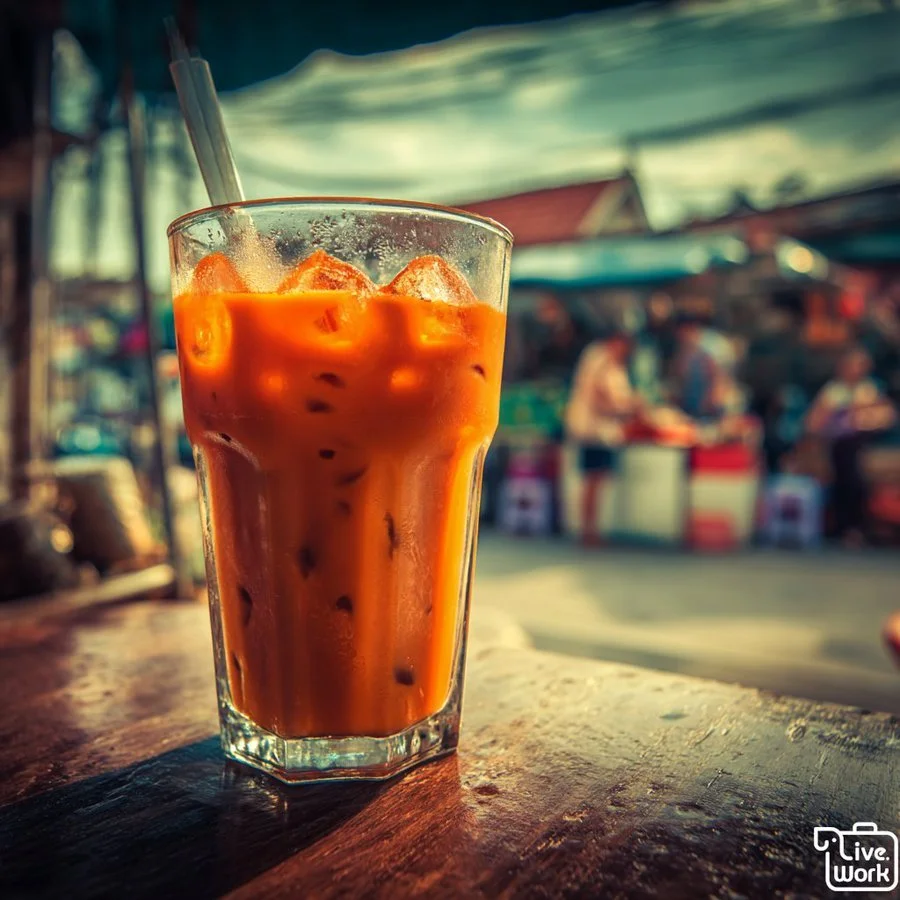Thai Tea: A Flavorful Journey Through Thailand’s Cultural Heritage
Few beverages capture the essence of Thailand quite like Thai tea (Cha Yen – ชาเย็น). With its rich amber-orange hue, creamy sweetness, and fragrant aroma, Thai tea is more than a drink — it’s a cultural experience, a symbol of hospitality, and a reflection of Thailand’s artful approach to flavor and tradition.
From the street vendors of Bangkok to elegant tea houses in Chiang Mai, this iconic beverage has transcended its humble origins to become a global favorite, inviting people everywhere to savor a taste of Thailand’s culinary soul.
🌿 The Origins of Thai Tea
The story of Thai tea is one of cross-cultural evolution. Introduced to Thailand during the late 19th century, tea cultivation expanded under King Rama V’s modernization initiatives, influenced by trade with China and India. However, the Thai adaptation gave the beverage its distinctive identity — infusing imported black tea leaves with local ingredients, aromatic spices, and a touch of sweetness.
What began as a drink for the elite quickly found its way into street stalls, family kitchens, and social gatherings, becoming a unifying feature of Thai daily life.
🍃 The Ingredients: A Perfect Harmony of Flavors
The secret behind Thai tea’s unmistakable flavor lies in its balance of simplicity and complexity. Each component contributes to a rich, multi-layered taste experience:
Strong Black Tea: Traditionally, Ceylon or Assam tea forms the base, delivering depth and body.
Condensed Milk & Evaporated Milk: These add creaminess and sweetness, giving the tea its silky texture.
Spices & Aromatics: Cardamom, star anise, tamarind seed, orange blossom water, and occasionally vanilla create the tea’s signature warmth and fragrance.
Sugar: Essential to balance the bitterness of the black tea.
Ice: In Thailand’s tropical climate, Thai tea is most often enjoyed chilled, poured over crushed ice for the ultimate refreshment.
The result? A vibrant orange-hued beverage that is simultaneously bold, smooth, and utterly addictive.
☕ The Art of Preparation
Preparing Thai tea is an act of craftsmanship — a ritual that combines patience, precision, and a touch of flair.
🧋 Traditional Method
Steep the Tea: Black tea leaves are brewed with spices to create a strong, aromatic concentrate.
Sweeten: Sugar is added while the tea is hot, allowing it to dissolve evenly.
Cool and Strain: The tea is poured through a fine muslin cloth or metal strainer to ensure smoothness.
Add Milk: Once cooled slightly, condensed and evaporated milk are blended to create the signature creamy consistency.
Serve Over Ice: Finally, the tea is poured dramatically over a glass of ice — a spectacle as satisfying to watch as it is to taste.
🧠 Fun Fact:
Street vendors often “pull” the tea between two containers to aerate it — a traditional Thai technique that cools the beverage while enhancing its texture and aroma.
🌏 Regional and Modern Variations
While Thai iced tea (Cha Yen) is the most famous form, the drink exists in many delightful variations:
Hot Thai Tea (Cha Ron): A comforting, aromatic version perfect for cooler evenings in the north.
Thai Green Tea (Cha Keow Yen): Made with matcha-style green tea and coconut milk, offering a vibrant twist.
Thai Bubble Tea: Modern cafés now blend Thai tea with tapioca pearls, merging East Asian and Thai influences.
Vegan Thai Tea: Substituting coconut or almond milk for condensed milk makes it dairy-free yet equally indulgent.
Each version highlights Thailand’s adaptability and creativity, bridging old traditions with new global trends.
🍯 Cultural Symbolism and Social Connection
In Thailand, tea is more than a refreshment — it’s an act of community and hospitality. Offering tea to a guest is a gesture of respect and warmth.
Thai tea also carries symbolic undertones:
Its golden-orange color represents prosperity and joy.
The sweetness reflects Thailand’s emphasis on harmony and balance in life.
Its versatility mirrors Thai culture’s ability to adapt while preserving authenticity.
Whether sipped at a street-side stall or served in a luxury café, Thai tea remains a shared pleasure that unites generations.
🌱 Sustainability and Thai Tea Production
As global demand for Thai tea grows, many small-scale farmers and cooperatives in northern Thailand — particularly in Chiang Rai and Chiang Mai — are focusing on organic cultivation and fair-trade production.
Projects led by the Royal Project Foundation encourage sustainable farming practices, ensuring quality tea leaves while protecting local ecosystems. Buying authentic Thai tea from certified producers supports these initiatives and helps maintain Thailand’s agricultural legacy.
✈️ The Global Rise of Thai Tea
Today, Thai tea has found fans in cafés from Los Angeles to London, often served as a photogenic symbol of exotic flavor. Its popularity reflects not only its taste but its emotional connection to Thai culture — colorful, joyful, and deeply rooted in tradition.
Global chefs and mixologists are experimenting with Thai tea in creative ways:
Desserts: Thai tea ice cream, panna cotta, macarons.
Cocktails: Thai tea martinis and rum-based infusions.
Fusion Cuisine: Thai tea-flavored tiramisu or crème brûlée.
This fusion of culinary art and cultural identity showcases Thailand’s soft power through food and beverage innovation.
✨ Final Thoughts
Thai tea is more than a drink — it’s a liquid embodiment of Thailand’s soul. Every sip tells a story of cultural evolution, craftsmanship, and connection. It bridges tradition and modernity, simplicity and sophistication, creating an experience that appeals to the senses and the heart alike.
So the next time you enjoy a glass of Thai iced tea — whether on a bustling Bangkok street or in your favorite café abroad — take a moment to savor not just the flavor, but the history, artistry, and warmth that make it unmistakably Thai.
